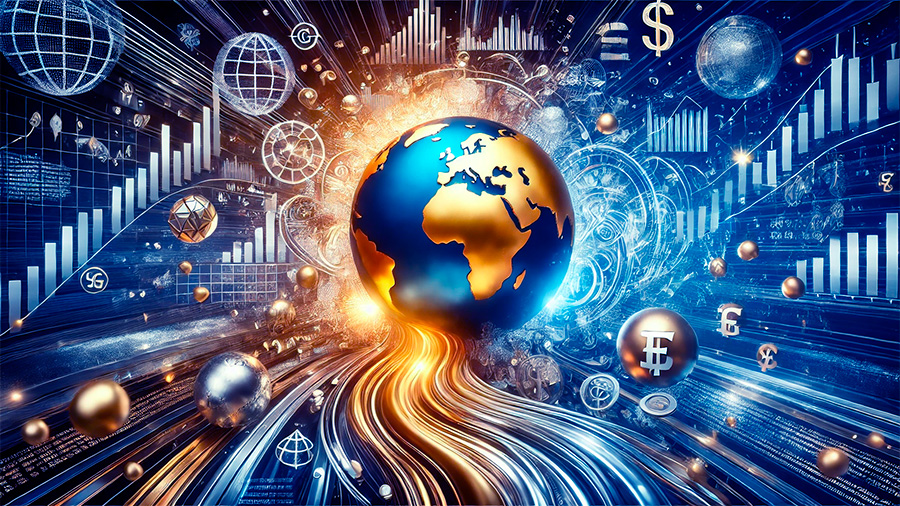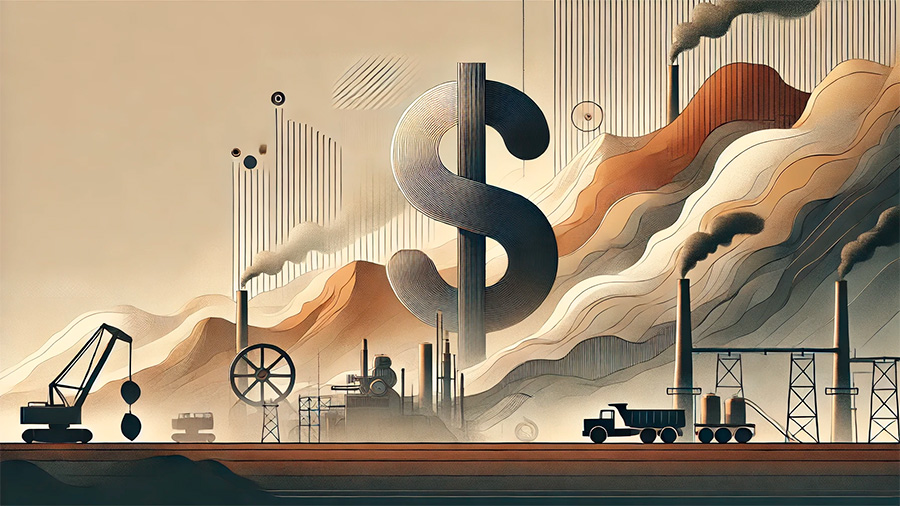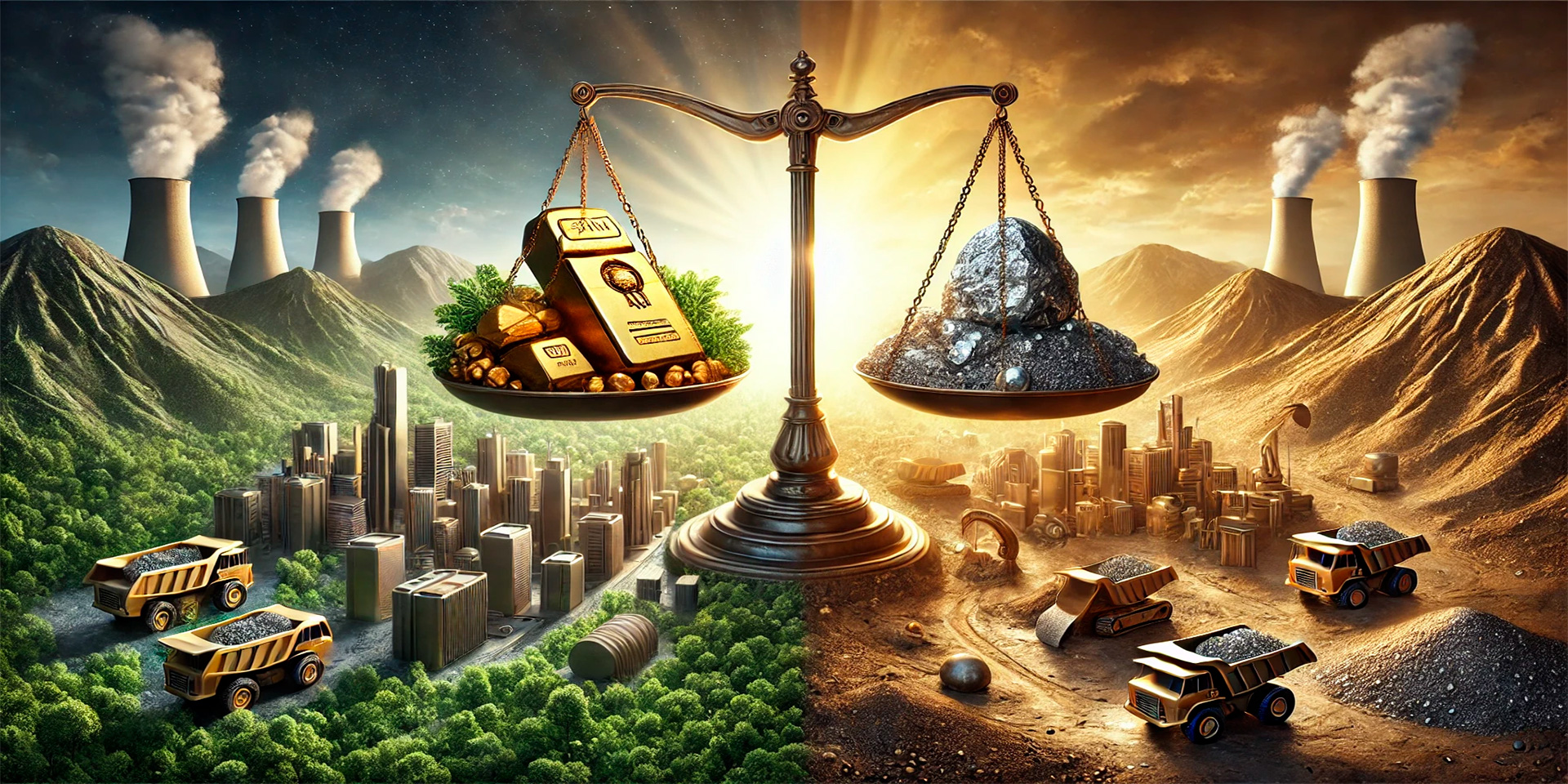Precious metal mining, especially gold and silver, plays a critical role in the economies of many countries. As primary exports for resource-rich nations, mining activities significantly contribute to GDP, create jobs, and foster overall economic development. This article explores how precious metal mining, particularly for gold and silver, influences national economies, with a focus on GDP growth, employment, and other economic factors in resource-rich countries.
Understanding the Importance of Precious Metal Mining
Precious metals such as gold, silver, and platinum are integral to the global economy, not only for their industrial applications but also as stores of value and investment assets. Mining these metals involves extracting valuable resources from the Earth, which requires significant investment, infrastructure, and labor. The economic benefits of mining extend far beyond the mining companies themselves, impacting local communities, national economies, and even global markets.
1. Contribution to GDP
The extraction of precious metals is a vital sector in many resource-rich countries, contributing directly to their GDP. Gold and silver mining, in particular, represent major industries in nations like South Africa, Australia, Canada, and Russia. The production of these metals involves complex supply chains, from exploration to extraction to refining, all of which add value to the national economy.
How precious metal mining influences GDP:
- Direct contribution: Mining activities add value to the economy by generating revenue through the sale of gold and silver. This direct contribution is calculated as part of the mining sector’s share of a country’s GDP.
- Indirect impact: The mining sector also has a significant indirect impact on GDP through its effect on other industries, such as construction, manufacturing, and logistics, all of which depend on mining for raw materials.
- Export revenues: Precious metals are often among a country’s most valuable exports, contributing to national wealth and trade balances, which further bolster GDP growth.
2. Job Creation and Employment Opportunities
The precious metals mining sector is a major employer, providing jobs in both direct and indirect capacities. From the initial stages of exploration and drilling to the later stages of mining, refining, and distribution, the industry offers employment opportunities across various skill levels. In many resource-rich countries, mining constitutes one of the largest employment sectors, particularly in rural and underserved areas.
How mining supports employment:
- Direct employment: Mining companies employ a wide range of workers, from engineers and geologists to laborers and technicians. These jobs often come with competitive wages and benefits.
- Indirect employment: The mining industry also supports a network of businesses that provide goods and services to mining operations, such as equipment manufacturers, suppliers, and contractors. This creates additional jobs and supports local economies.
- Community impact: Mining can help improve employment rates in economically disadvantaged regions, reducing poverty levels and enhancing local economic stability.
3. Infrastructure Development
Precious metal mining often requires substantial investment in infrastructure. This includes roads, railways, utilities, and communication systems that connect mining operations to broader markets. These infrastructural improvements not only benefit the mining industry but also enhance the economic development of surrounding communities.
How mining drives infrastructure growth:
- Transportation networks: Building roads and railways to transport mined resources boosts the overall infrastructure of the country, facilitating trade and logistics.
- Utility improvements: Mining operations often necessitate the development of energy and water supplies, which can improve the quality of life for nearby communities.
- Economic spillover: The infrastructure built for mining often supports other sectors, such as tourism, agriculture, and manufacturing, contributing to broader economic growth.

The Role of Precious Metals in Global Markets
While the economic impact of precious metal mining is significant at the national level, it also has substantial effects on global markets. Gold, silver, and other precious metals are key commodities that influence global trade, investment strategies, and financial stability.
1. Gold as a Global Investment Asset
Gold has been regarded as a safe haven for investors for centuries. Its value tends to rise during times of economic uncertainty, inflation, or geopolitical instability, as it is seen as a stable store of value. As a result, the mining of gold is crucial not only for individual nations but for the global economy as well. Countries that produce large quantities of gold are major players in the international markets, with their mining operations impacting global gold prices.
Global investment and gold mining:
- Hedge against inflation: Investors turn to gold as a hedge against inflation and market volatility. The stability provided by gold has made it a key investment during times of global uncertainty.
- Global supply and demand dynamics: Countries that mine gold significantly affect global supply chains. When mining output increases, it can put downward pressure on prices, while decreased output can result in higher prices.
- Market liquidity: Gold mining contributes to the liquidity of global financial markets by providing a physical asset that can be easily traded and used as collateral.
2. The Role of Silver in Industrial Applications
Silver, while often thought of as a precious metal, also plays a significant role in industrial applications, particularly in electronics, solar energy, and medical devices. The demand for silver in these industries drives much of the mining activity, particularly in countries like Mexico, China, and Peru.
How silver impacts global industries:
- Industrial demand: Silver is an essential material in the production of electronics, solar panels, and batteries. This industrial demand can significantly influence silver prices and mining activities.
- Supply chain impact: The supply of silver from mining activities influences global production in electronics and renewable energy sectors, with price fluctuations affecting the cost of manufacturing and production.
- Economic diversification: Silver mining plays a critical role in diversifying the economies of resource-rich countries, providing stability in sectors beyond precious metals alone.

Challenges and Risks in Precious Metal Mining
While the economic benefits of precious metal mining are clear, the industry also faces significant challenges. These challenges range from environmental concerns and regulatory hurdles to fluctuations in metal prices, all of which can impact the stability of the mining sector.
1. Environmental Impact
Mining activities, particularly those related to precious metals, can have significant environmental consequences. The extraction of gold and silver often involves processes that can lead to soil erosion, water contamination, and habitat destruction. Governments and mining companies must work together to implement sustainable mining practices that minimize the environmental footprint of the industry.
2. Volatility of Metal Prices
The prices of precious metals are subject to significant volatility, influenced by factors such as market speculation, geopolitical tensions, and changes in global supply and demand. Fluctuations in metal prices can impact mining profitability and the overall economic stability of countries dependent on mining revenues.
3. Labor and Social Concerns
The mining industry, particularly in developing countries, has faced challenges related to labor conditions, human rights, and worker safety. Governments must enforce regulations to ensure fair labor practices and safe working environments in mining operations.
Conclusion
Precious metal mining plays a pivotal role in the economic development of resource-rich countries, contributing to GDP growth, job creation, and infrastructure development. The extraction of metals like gold and silver not only influences national economies but also impacts global markets, providing a stable store of value and serving as an essential input for various industrial applications. However, the industry must navigate challenges such as environmental sustainability, market volatility, and labor concerns to maintain its long-term economic benefits. By addressing these issues and ensuring responsible mining practices, countries can continue to harness the economic potential of precious metal mining while fostering sustainable growth.


